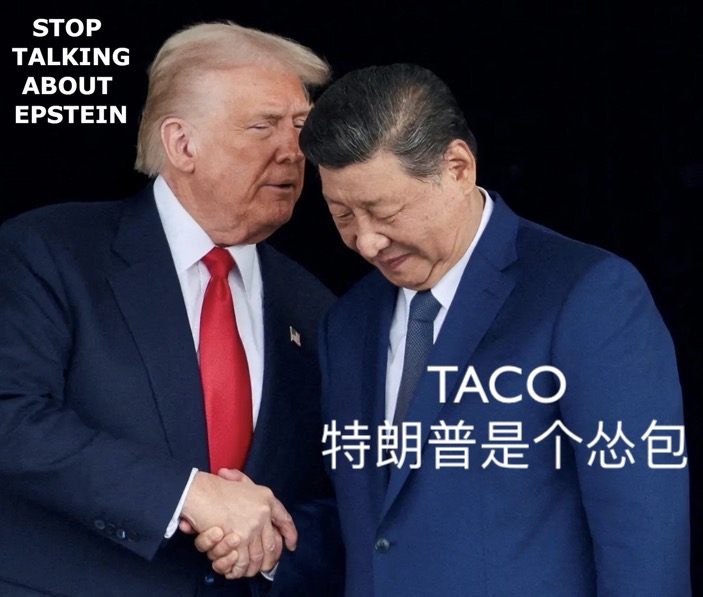What happened when Trump met Xi? (Brookings Institution)
https://www.brookings.edu/articles/what-happened-when-trump-met-xi/
Lesson 1 of several:
 China’s lesson: It pays to push back
China’s lesson: It pays to push back
image annotated.
On October 30, 2025, in Busan, South Korea, U.S. President Donald Trump and Chinese President Xi Jinping met for roughly 100 minutes. The meeting concluded Trump’s five-day trip to Asia, his first visit to the region during his second term. In the commentary below, Brookings scholars analyze the key takeaways from the Trump-Xi meeting.
The Trump-Xi meeting validated Beijing’s strategy of pushing back forcefully against U.S. actions. The Trump administration has tried to search for new pressure points with China, moving far beyond tariffs to export controls, port fees, visa restrictions, and sanctions. China has responded with its own expanded toolkit, hitting back with a range of measures that mirror many U.S. actions. In the process, China has discovered which levers seem to be the most effective in dealing with the United States, including soybean purchases and a TikTok deal. And twice now, China has found export controls on rare earths to be its ace of spades.
China’s primary goal is to halt the expansion of U.S. measures against it. No new tariffs or fees. No new export controls or sanctions. No new efforts to hobble its economy or slow down its technological development. Beijing had hoped that the Madrid meeting in September would mark a more lasting truce, but it grew frustrated with what it viewed as the bubbling up of new U.S. measures that violated the spirit of the talks. This came to a head with the expansion of the U.S. Entity List rules that would effectively subject thousands of additional companies connected to China to U.S. export controls. Beijing struck back through a massive expansion of its rare earths export controls that would have far-reaching consequences for global high-technology supply chains.
The recent meeting between Trump and Xi in South Korea marks another momentary de-escalation between the United States and China. But many of the actions both sides have taken are not permanently off the table. Moreover, China has now begun to develop a full-fledged export control regime, not just for rare earths but for a wide range of critical materials and technologies. So, while it may seem as if both sides have simply wound back the clock on their tit-for-tat retaliatory measures, the reality is that this process has helped spur the development of China’s defensive and offensive tech-industrial capabilities.
Eight more at the linked article.
